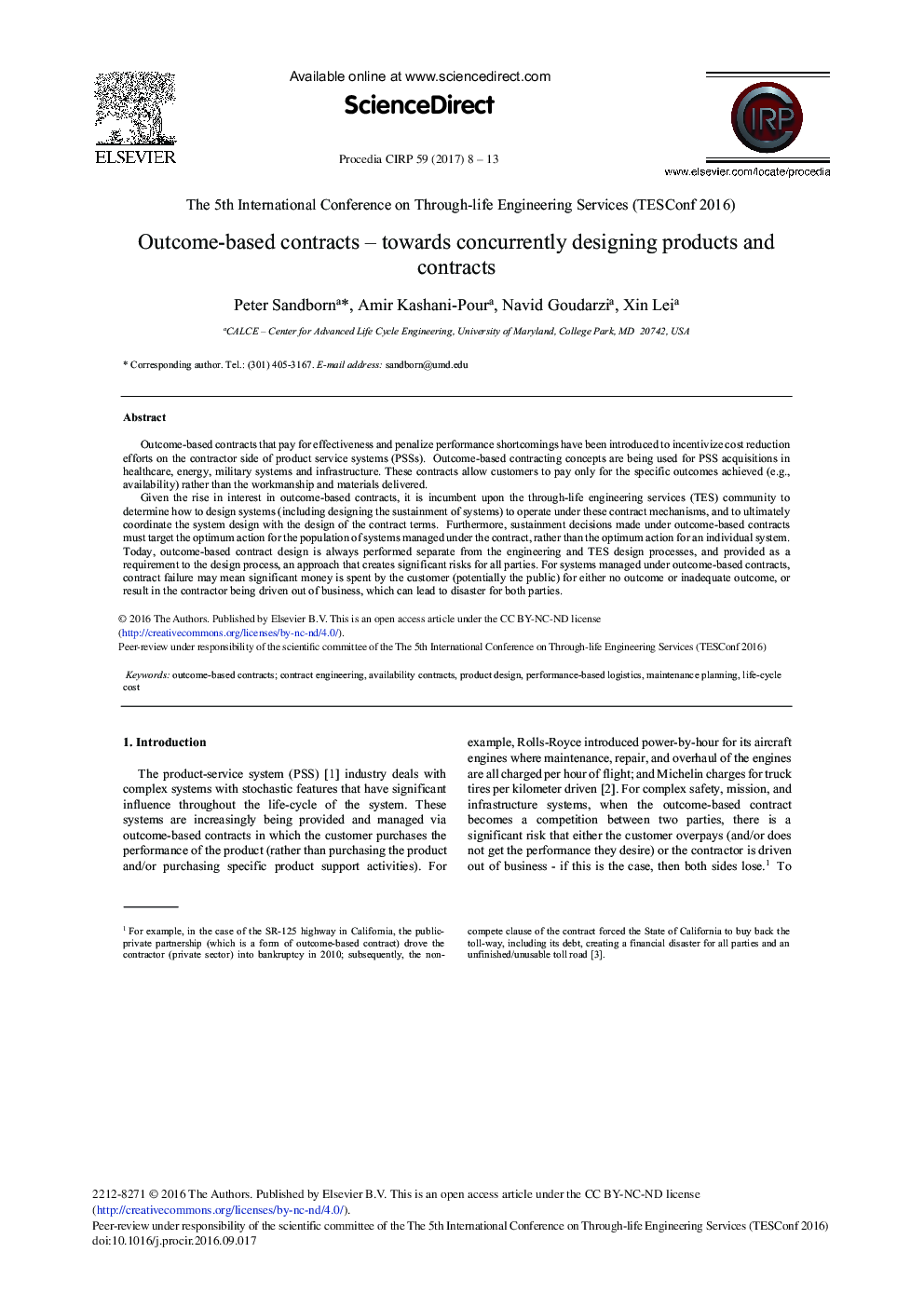| Article ID | Journal | Published Year | Pages | File Type |
|---|---|---|---|---|
| 5470064 | Procedia CIRP | 2017 | 6 Pages |
Abstract
Given the rise in interest in outcome-based contracts, it is incumbent upon the through-life engineering services (TES) community to determine how to design systems (including designing the sustainment of systems) to operate under these contract mechanisms, and to ultimately coordinate the system design with the design of the contract terms. Furthermore, sustainment decisions made under outcome-based contracts must target the optimum action for the population of systems managed under the contract, rather than the optimum action for an individual system. Today, outcome-based contract design is always performed separate from the engineering and TES design processes, and provided as a requirement to the design process, an approach that creates significant risks for all parties. For systems managed under outcome-based contracts, contract failure may mean significant money is spent by the customer (potentially the public) for either no outcome or inadequate outcome, or result in the contractor being driven out of business, which can lead to disaster for both parties.
Related Topics
Physical Sciences and Engineering
Engineering
Industrial and Manufacturing Engineering
Authors
Peter Sandborn, Amir Kashani-Pour, Navid Goudarzi, Xin Lei,
